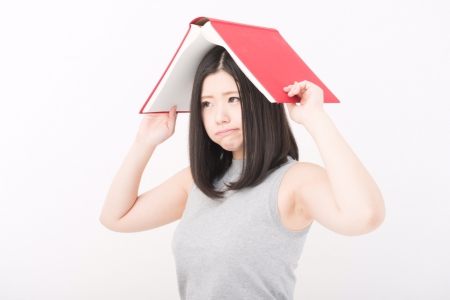Let’s take a look at the TOEIC strategy technique series, Part 7. Part 7 is a hard part with 15 long sentences. Let’s take good measures and get a score even a little!
Let’s hold the point

Part 7 has three problem types. A single passage that answers a problem by looking at one sentence, a double passage that answers a problem by looking at two sentences, and a triple passage that answers a problem by looking at those three sentences. With the revision in 2011, the difficulty level has increased, and in order to read all the sentences, 180 words must be read per minute.
Answer pattern and points
There are five main types of answer patterns: vocabulary problems, reading comprehension problems, problems that include whole sentences, problems that find incorrect descriptions, and problems that read the intention of the writer. There are various forms of text such as emails, chats, articles and websites, so it is important to check what the text is.
When the human brain reads a sentence, it uses the background knowledge about it to guess the content. Whether you have background knowledge or not will greatly change the comprehension of the text, so it is recommended that you start with the problem after judging what the text is.
Practice to read quicker

The reading comprehension problem in Part 7 requires theoretical thinking and the ability to quickly find points in writing. For example, can you read Japanese sentences and solve reading problems? This language ability may be related to the accuracy rate of Part7.
How to make it easier to solve?
If you read it in Japanese, you will understand the meaning and the correct answer rate will increase. However, not all students were able to get a perfect score because of reading comprehension problems they did in Japanese language classes when they were students. In other words, if you improve your basic reading comprehension (language skills), it will be easier to understand Part 7. I’ll explain what practice I should do.
Let’s practice
First, prepare the TOEIC question book and open the full translation page of the answer in Part 7. For example, suppose you have this text:
<chat>
Emily: I want to get together after a long time, but is tomorrow free?
Kate: There may be a part-time job tomorrow. If you don’t have a part-time job, you can join.
Emily: I understand. I’m going to ask Tom and Lucas, so if you know your schedule, let me know
Kate: Yeah. But Lucas told me there was a lecture until 17:00 tomorrow.
Emily: That’s right. Tom is taking the same lecture as Lucas, so both of them may not be able to gather until 18:00.
Crush the text
Next, let’s break down the sentences with all the characters as the subject.
Since Emily wanted to get together tomorrow, he also spoke to Kate, Tom, and Lucas. Kate was asked by Emily whether to meet tomorrow, but tomorrow may have a part-time job. Tom may have a lecture until 17:00 tomorrow. Lucas told Kate that there would be a lecture until 17:00 tomorrow.
If you change the subject in this way and crush the sentence, the details become three-dimensional and the sentence comprehension improves. Try this in English instead of Japanese as you get used to it. I think it will be a good practice.
Improve your general English level

Part 7 requires comprehensive English proficiency. To improve your English, it is important to dig deeper into words that you understand.
Training method
Let’s look at sofa in English-English dictionary. For example, type of chair. Now let’s pull the chair. Then, when this word is looked up in the English-Japanese dictionary this time, it means that chair will make the chairman / person stand in the position of ~. By deeply understanding and understanding the words you understand, your English will become stronger.
To improve your English
I also think it’s better to understand English in Japanese than to understand English in English. Understanding English in English requires a very high level of English and takes time. We studied Japanese in Japanese at the time of Japanese language, but did you understand everything? If you think that it is impossible even in Japanese, you can see how difficult it is to understand English in English.
Conclusion

1. Know the enemy first (hold points)
2. Improve reading comprehension (language skills)
3. Deepen your words and develop English skills
Thank you for reading!









































Leave a Reply